Hinduism, the most widespread religion in India, permeates every aspect of daily life, including music, cuisine and celebrations. For this reason, to truly understand India during your trip, you should at least discover the basics of this ancient religion. With its caste structure and many deities, Hinduism encompasses many beliefs and spiritual practices that you can observe in every city and temple.
Table of Contents
What the beliefs of Hinduism are
First, Hinduism is not just a religion but a way of life with a set of rules to follow that has evolved over the centuries. Unlike other faiths, Hinduism does not have a specific founder, a defined theology or a central religious authority. Furthermore, in Hinduism, there are no conversions because one is already born into the Hindu faith and a specific caste. It makes it quite confusing for a Westerner who decides to embrace Hinduism, as there is no formal conversion procedure and no ‘target’ caste.
PLAN YOUR TRIP TO INDIA
When in India, stay connected at the best rates by purchasing an Airalo eSIM online before your trip. This eliminates the hassle of purchasing a physical SIM at the airport.
About travel insurance, Heymondo is the way to go. They offer comprehensive coverage against unexpected events like medical emergencies, trip cancellations, lost luggage, and more. Heymondo provides excellent value for money and will give you peace of mind on your travels!
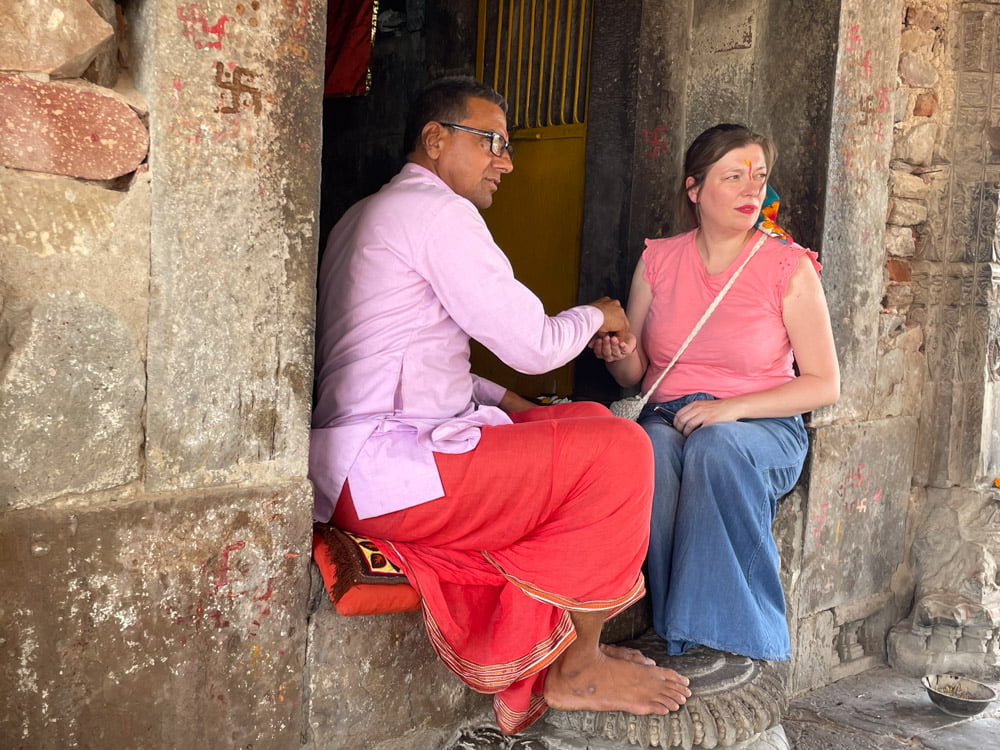
The caste system in the Hindu religion
A distinctive feature of Hinduism that amazes us Westerners is the division of the population into castes. This system defines the role and responsibilities of each individual within society, with a category of outcastes or untouchables that has disappeared today. Traditionally, there are four main groups of Indian castes:
- Brahmans (priests, scholars and teachers): the upper class primarily concerned with religious and spiritual activities. They are considered the custodians of sacred knowledge.
- Kshatriya (warriors and rulers): the social class responsible for protection and governance. It includes kings, warriors, nobles and administrators.
- Vaishya (merchants and farmers): the social class dedicated to trade and agriculture.
- Shudra (artisans and workers): this social class includes manual labourers and servants. They are responsible for providing support and services to the other castes.
Thanks to a new awareness, successive Indian governments have implemented measures to eliminate this discrimination and promote equality and social mobility in recent years. In particular, Manoj Kumar, the guide who accompanied us on our trip to Rajasthan (you can contact Manoj on Instagram), explained that India offers all children, regardless of their social class and caste, the opportunity to study up to the highest levels. At the same time, adults can choose a job other than that of their caste of birth.
However, the caste system still strongly influences Indian society, especially in rural areas. In some regions or neighbourhoods of India’s cities, poverty is so widespread that, from what I have noticed, education is not a priority for families. That is why the son of the manual labourer who becomes a politician is unique.
Creation and the cycle of rebirth in the Hindu religion
Hindus believe thatthe god Brahma, the deity of creation, generated life. To understand Hinduism, it is essential to know that after birth, all human beings are subject to the obligations of earthly life, called dharma, and the cycle of reincarnation.
According to Indians, the body is only a temporary garment, worn during this life. Body is something to abandon at the end of a cycle of rebirth because you’ll get a new one. Follow through, Indians experience birth and death in a lighter way than in the West. For Hindus, nothing is permanent; we are only passing through.
The concept of reincarnation is deeply rooted in the culture of Hindus. The actions performed in this life determines fate and position in the next reincarnation. This cycle continues until the soul achieves liberation and unites with the divine.
Consequently, reincarnation and dharma influence the choices and actions of Hindus who seek to live a life in harmony with their moral and religious principles to improve their chances in future existences. However, Indian society does not visibly reflect this worldview, focuses on personal responsibility and the importance of one’s actions. For example, I would have expected more attention to the environment and the lower social classes.
In contrast, for Indians, the actions that contribute most to shaping their spiritual destiny are taking care of the sacred cows and visiting and leaving offerings at their ashrams. More than avoiding throwing rubbish on the streets where homeless families sometimes live. It is another contradiction that is part of India’s charm and leaves many questions open to us Westerners.
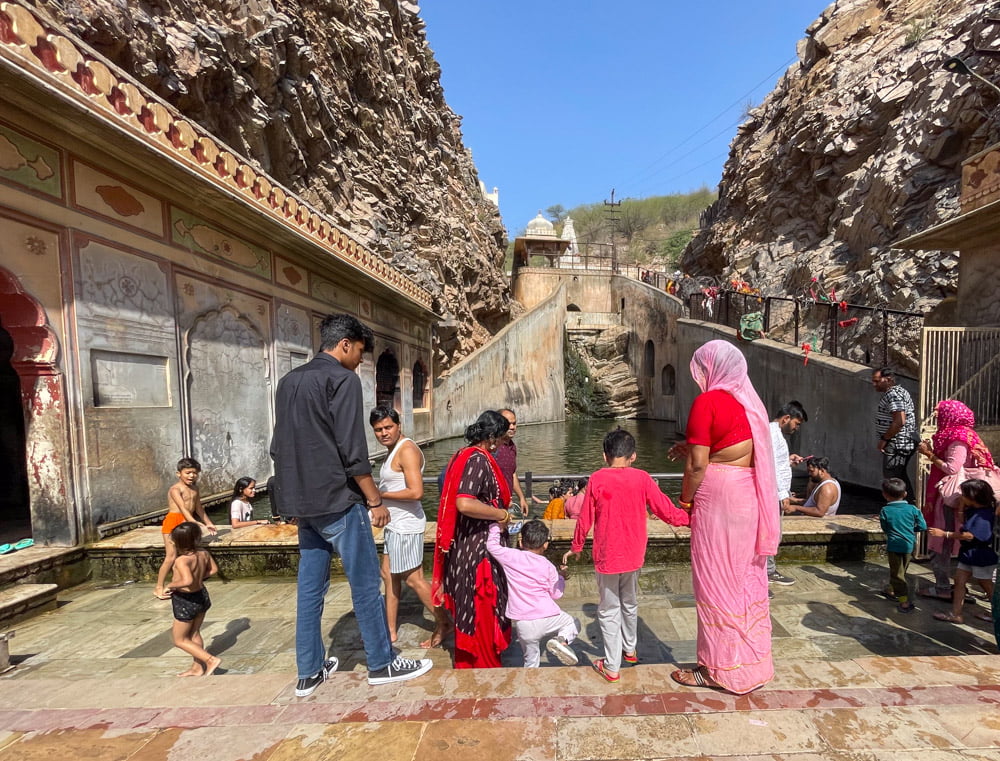
The sacred texts of Hinduism
Sacred texts play a central role in Hinduism because they provide spiritual and philosophical guidance to believers through essential teachings on religious practices and fundamental doctrines, often in the form of dialogue between master and disciple. Some of the most important sacred texts include:
- Vedas are the oldest and most sacred texts, comprising hymns, ritual formulas, prayers, and philosophical teachings.
- Upanishads are philosophical texts that explore fundamental principles such as the unity of being, the individual soul (Atman), and the Absolute (Brahman).
- Bhagavad Gita is an epic part of the Mahabharata, considered a spiritual guide on morality, duty, right action, and the search for truth.
- Ramayana tells the story of Rama, his epic journey and challenges in the fight against evil, offering moral teachings and devotion.
- Mahabharata is one of the world’s greatest epic poems. It narrates the war between two royal families and contains ethical, philosophical, and spiritual teachings.
- Puranas is a vast collection of mythological and legendary texts detailing deities, heroes, stories, and religious practices.
The most important Hindu deities
A vast number of deities characterise Hinduism, each worshipped for different reasons. Each deity has its unique attributes and sphere of influence, which can relate to creation, protection, love, wisdom and many other aspects of life, including more material events, such as buying a new car. The primary and most popular gods in Hinduism are:
- Brahma: the deity of creation, worshipped for his role in the process of the birth of the universe. Artists often depict him with four heads that symbolize the four Vedas, the sacred texts of Hinduism.
- Vishnu preserves and maintains the balance of the universe. Indians worships him for his role as a protector, saving people from the forces of evil through his incarnations (avatars) on Earth.
- Shiva is the deity of destruction and transformation, worshipped as the lord of meditation, wisdom and detachment from the material world. Artists often depicted him with a trident (trishula) and a snake around his neck called Naga.
- Krishna is the Lord of love and devotion, one of the incarnations of Vishnu. The epic Mahabharata and the Bhagavad Gita narrate his life and deeds, and he provides spiritual and moral teachings in them.
- Parvati, wife of Shiva and mother of Ganesha and Skanda, is the goddess of female power and conjugal love, often depicted with many arms and a crown on her head.
- Ganesha is the god of wisdom and intellect and the beginning of every new project. He is easily recognisable by his elephant head. People often invoke him at the beginning of ceremonies and rituals, seeking his blessings and requesting him to remove any obstacles.
- Hanuman is the monkey god known for his strength, courage and devotion to Rama in the Ramayana epic. He represents the ideal of service and loyalty.
These deities represent only a part of the many figures worshipped in Hinduism, each with its unique characteristics and symbolic significance. Their veneration reflects the search for spiritual connection, protection, wisdom and the desire to lead a balanced and harmonious life.
Hinduism in daily life: customs and traditions in religion
In India, you will soon realise that Hinduism influences customs and traditions. Rituals such as prayer and flower offerings in temples are an essential part of daily life for Indians to maintain a spiritual connection with the deities and seek blessings for a happy and prosperous life.
Another significant mark of Hinduism in daily life is the respect for nature and the environment. For example, Hindus regard certain species of trees as sacred because of the benefits they offer. People revere the Ficus because they believe it produces more oxygen than other plants. Or the Neem, used for skin care, oral hygiene and as a natural insecticide. The principles of Hinduism include respect for all forms of life, including animals. That is why many Indians follow a vegetarian diet.
However, despite Hindu traditions’ deep connection to the environment, its protection is often neglected. Even though recent years have seen an increased focus on ecology, rubbish is almost everywhere, even in sacred lakes such as Pushkar, where Indians bathe.
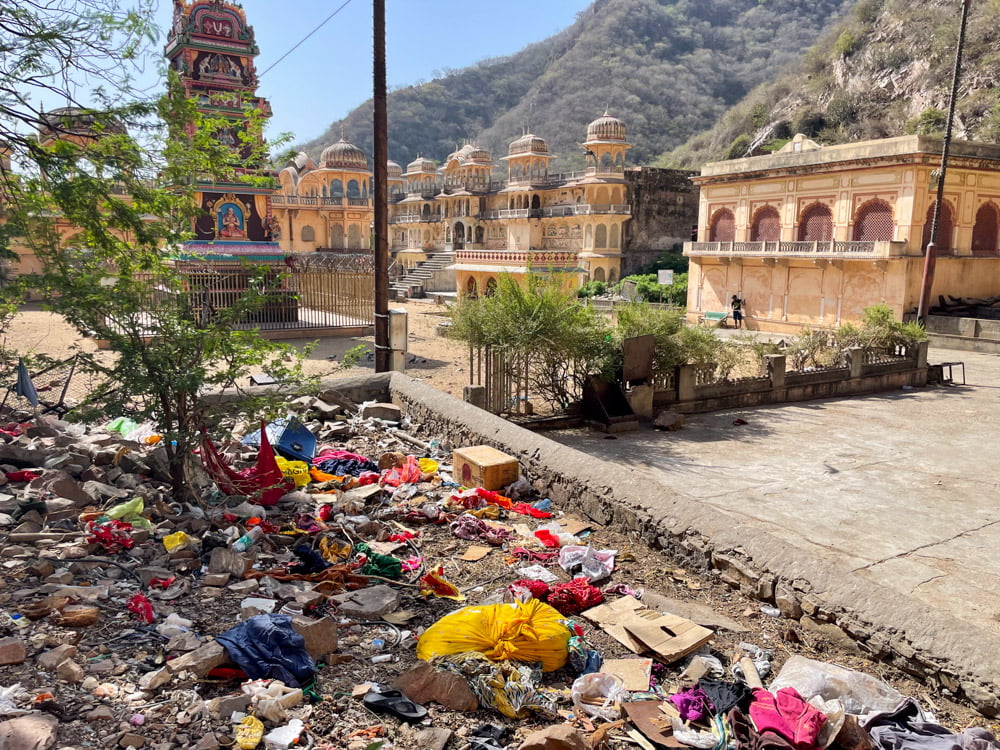
Cows in India: why they are sacred
When travelling in India, you will quickly discover that cows occupy a significant role in Indian culture. According to Hindu tradition, cows are sacred because a deity created them. Consequently, cows aren’t food for Hindu.
Indeed, Indians who eat meat choose chicken and lamb, never cattle. Many Hindus also believe that the cow is not simply an animal but a deity incarnate. Cows play an essential role in the daily lives of Indians because they provide food, medicine and fuel.
The gifts of cows: food, medicine and fuel
Cow’s milk is considered a precious food, even given to infants their mothers cannot feed. It shocked me because, in Western medicine, cow’s milk should be avoided until weaning. In fact, it can cause severe damage to an infant’s digestive system.
However, the cow also plays a significant role in Ayurvedic medicine, based on the concept of natural balance and harmony. Traditional remedies, including cancer treatments, have cow urine as ingredient. Although our tour guide claims the innumerable benefits of cow urine, I won’t try it as miracle cure.
In my opinion, it is more interesting learning about how cows manure is still in use in India. Drying manure and then selling it as fuel for stoves is still a common practice in Asia, as it was in the last century in the European countryside. It is, in its way, a very environmentally friendly system.
How cows are treated
In India, seeing domestic animals treated as in the West is almost impossible. Even animals with an owner, such as cows and dogs, roam freely in the streets and are fed by the community. Tradition dictates that the first chapati bread baked in each household is for the cows and the last for the dogs. In practice, however, many animals live semi-randomly by the roadside and eat rubbish despite the respect for animals promoted by Hindu principles.
As for cows, they looks very different from our Western well-fed farm cows. Indian cows are skinny, and some have a hump on their backs. However, cows are everywhere outside the capital, even on the express roads. Even those with an owner roam freely in the streets.
Despite this, drivers take a lot of care to avoid them. Anyone who kills a cow, even in an unintentional way such as an accident, has to leave his family and beg for a set time before being allowed to return home.
Cows have dedicated shelters that serve as hospitals for injured animals, founded by local saints or ascetics such as the Sadu. Taking care of the cows is considered an act of good karma. For this reason, many families visit them together and leave offerings, as I saw at the cow sanctuary in Nagaur, described by our guide as ‘the most beautiful thing in India’. However, my group undoubtedly preferred the Taj Mahal.
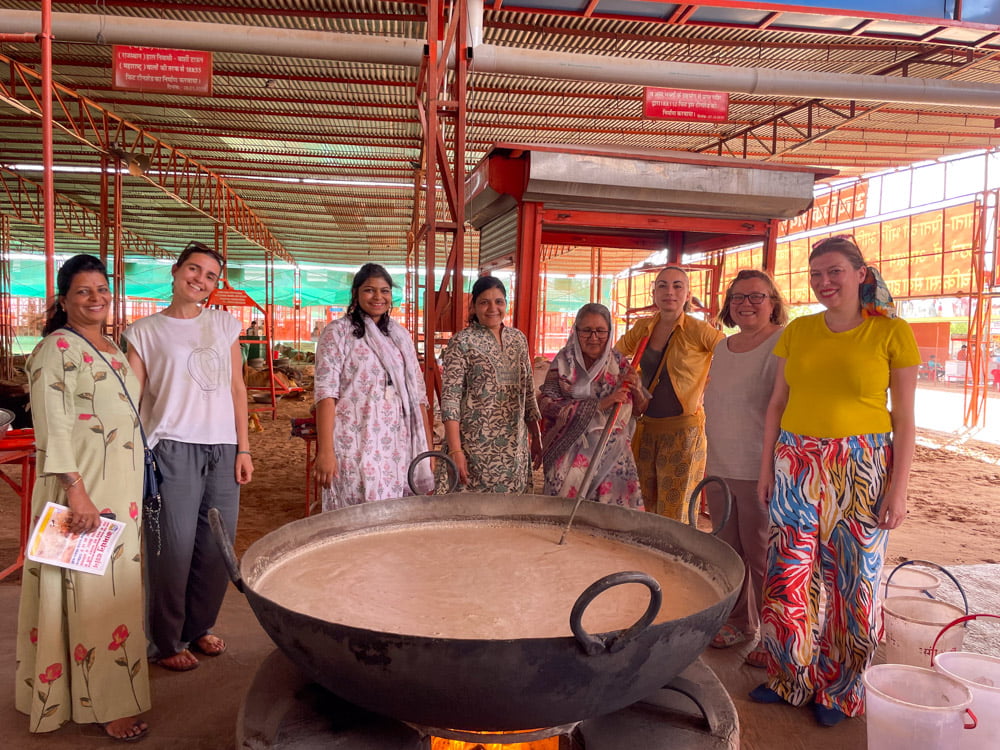
Temples, rituals and festivities of the Hindu religion
When travelling in India, take advantage of the opportunity to immerse yourself in the numerous rituals of the Hindu religion. Participating in the events is an extraordinary experience to understand Indian culture. Each festival has a unique meaning and history, often linked to mythological episodes or historical events.
You can witness processions, dancing, singing, and temple offerings during these celebrations. Diwali, for instance, is the festival of lights, symbolising the victory of light over darkness. At the same time, Holi is a vibrant festival of colours heralding the arrival of spring.
A great thing about India is that you are always welcome to join the processions if you want to. While watching a wedding in Jodhpur, a woman invited me to join to the dance. Participating in a Hindu ritual or event is an incredible experience that allows you to uniquely experience the energy and devotion that permeates these age-old practices.
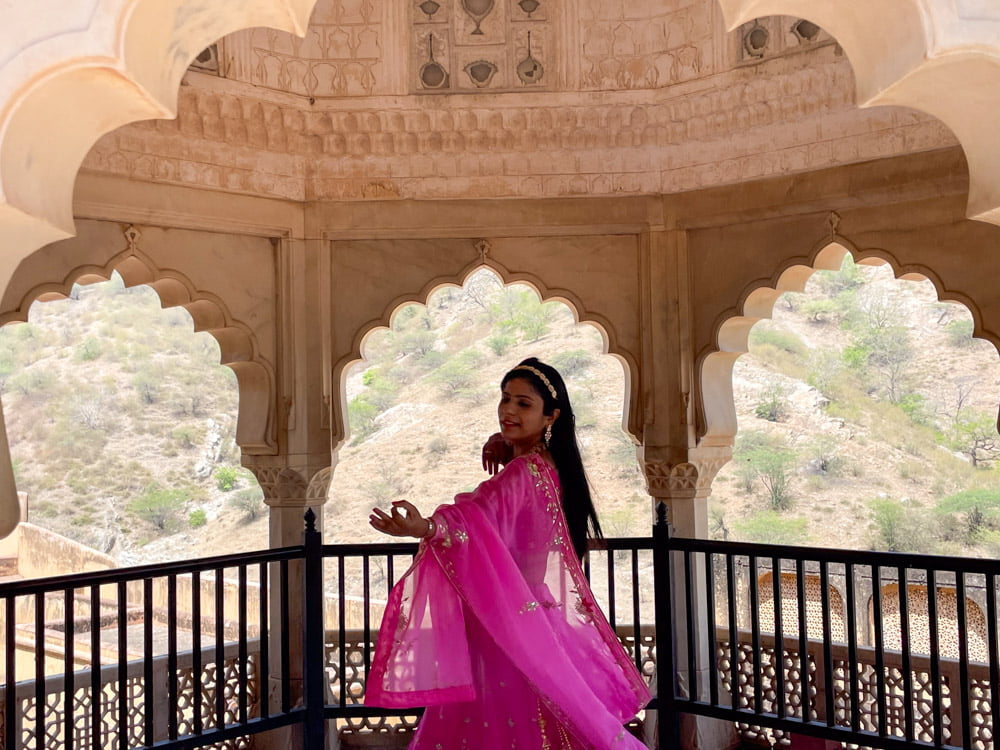
Why and when worshipping Hindu deities
Each deity in the Hindu religion is worshipped for its specific role. For instance, people worships Rama, the divine incarnation, present on Earth to defeat a demon king, for his courage. At the same time, people worships his devoted servant Hanuman, a monkey man, for his loyalty.
Hindus have an almost personal connection to the deities. They may turn to a particular deity according to their needs, experiences, and spiritual inclinations. If you seek prosperity and material abundance, you can turn to Lakshmi, the goddess of wealth and fortune. If you seek success and wisdom, you can instead pray to Saraswati, the goddess of knowledge and art. Shiva, the god of destruction and transformation, is right god for protection, purification, and inner peace.
People worship Krishna, an incarnation of Vishnu, for his wisdom, love, and compassion. You can pray to Krishna to receive love, guide your spiritual path, or overcome conflicts in your life. Parvati, wife of Shiva, is worshipped as the goddess of love, fertility, and strength. Women can turn to Parvati to ask for protection, blessings for the family, and the well-being of their children.
Also, in temples dedicated to Vishnu, the deity supremely loved by Hindus, you can find the image of Garuda, a man-bird who serves as Vishnu’s representative, worshipped as a powerful symbol of protection and devotion. My favourite, however, remains Ganesh, the elephant-headed god. You can pray him for success in every new venture. He is also worshipped whenever a new moped has purchased.
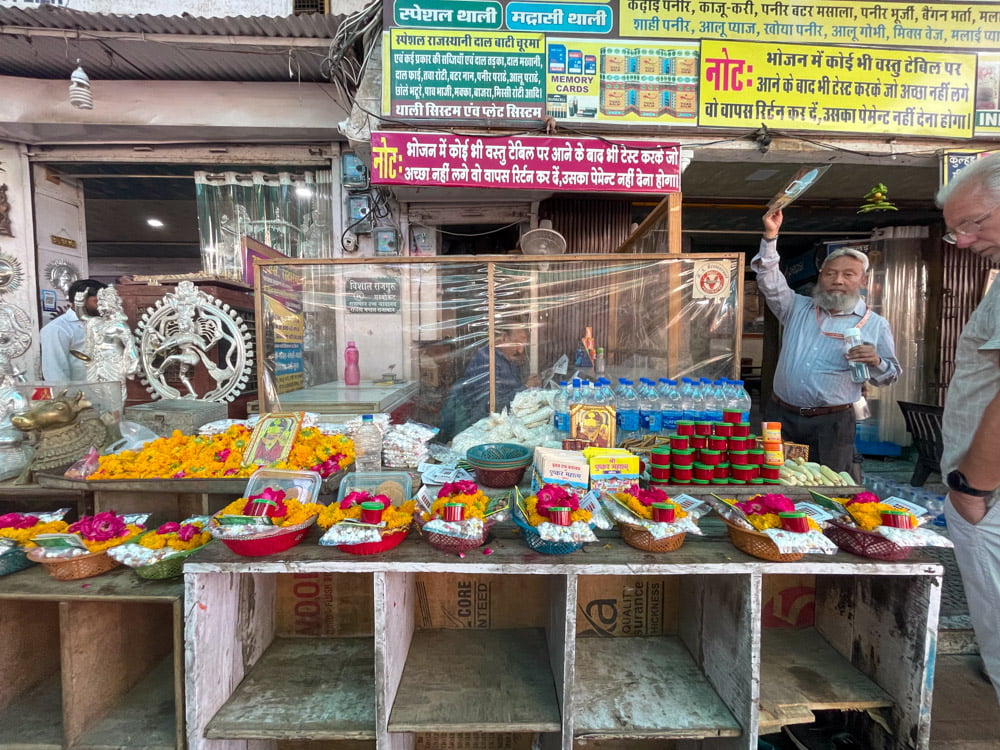
What Hindu temples look like
Indian temples are architectural complexes that reflect the aesthetics and beliefs of Hinduism. When visiting Hindu temples during your trip to India, you may notice a variety of styles and designs. However, some standard features repeat in the various architectures.
First, Indian temples are often surrounded by perimeter walls that enclose a courtyard or a larger complex. The main entrance is usually adorned with a large door called a gopuram, sometimes decorated with sculptures and reliefs depicting deities and mythological scenes.
Inside the temple, there are rooms for offerings and open courtyards used for ceremonies and celebrations. Some temples also include ritual baths and facilities to accommodate priests and devotees visiting the temple. Within the temple complex, the most sacred part is a room called garbhagriha, where there is the image or statue of the temple’s main deity.
Some Indian temples are most famous for their intricate architectural details and sculptures. The walls, ceilings, and columns are often decorated with sculptures depicting deities, mythological scenes, flowers, and animals. These fine works of art can be made of stone, wood, or metal. However, each temple has unique characteristics depending on the region, historical period, and architectural style.
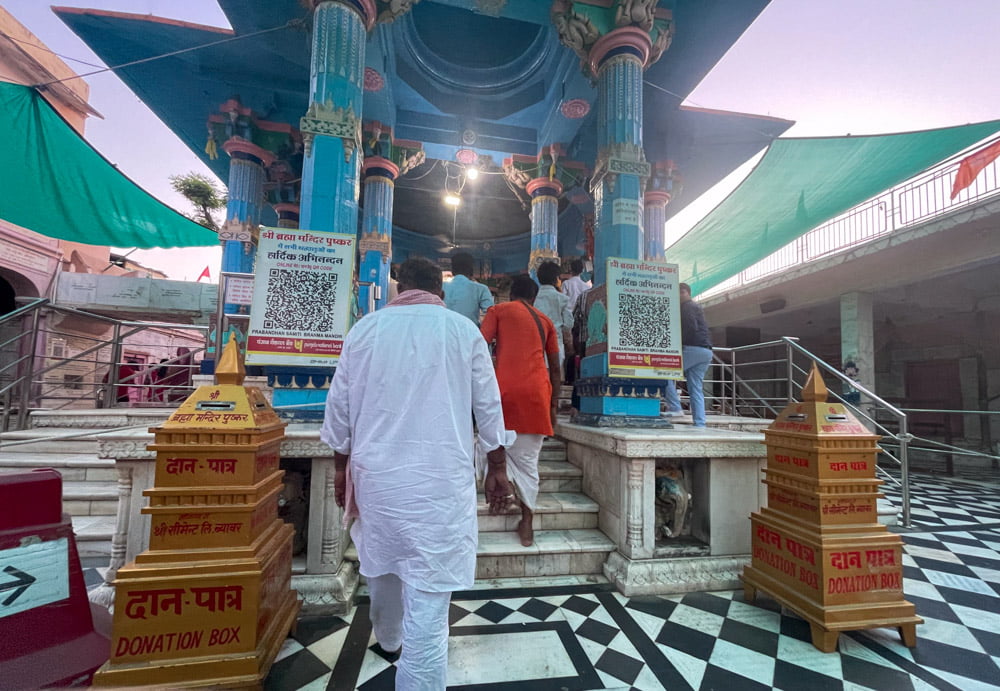
Advices for respecting culture and religion while travelling in India
During your trip to India, showing respect for Hindu culture and religion is of utmost importance. When entering a temple, the first thing to remember is to remove your shoes as a sign of respect (which is compulsory anyway). While visiting temples, try to avoid disturbing the ongoing religious ceremonies or rituals. Observe without interfering or taking photographs without permission.
Taking photographs is not officially allowed in many sacred places in India. However, it is common to see Indian families taking selfies. As a tourist, keep in mind that these places are sacred and deserve our respect. That is why you will find a few photographs of Indian temples in my blog, compared to the amount of places visited.
If you interact with Indians respectfully and openly, showing interest in their religion and culture without judgment, you can learn about many aspects of India often denied to the hit-and-run tourists. Visiting India can be an authentic and enriching experience, not least through immersion in the customs and beliefs of the Hindu religion. Please share your thoughts in the comments, and let me know if you have been fascinated by the Hindu religion despite its apparent contrasts.
